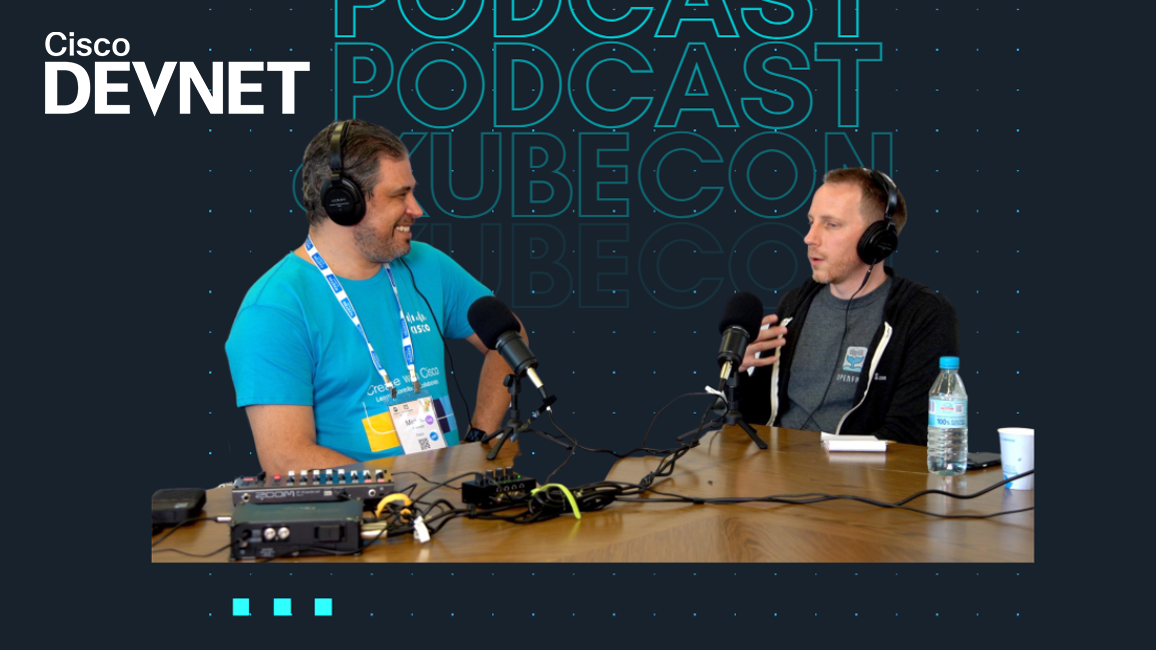- Learn with Cisco at Cisco Live 2025 in San Diego
- This Eufy robot vacuum has a built-in handheld vac - and just hit its lowest price
- I highly recommend this Lenovo laptop, and it's nearly 50% off
- Disney+ and Hulu now offer prizes, freebies, and other perks to keep you subscribed
- This new YouTube Shorts feature lets you circle to search videos more easily
“Cloud Unfiltered” Podcast: How Kubernetes and Containers Are Evolving

Note to reader: Time stamps embedded in the text below in [ ] are there to help you navigate to the related section of the full interview video included in this blog.
Some technologists geek out on tools but don’t translate the benefits into real-world applications. Not Alex Ellis. Alex takes a unique approach in his work and in his writing, helping explain tech in context so that the benefits of technical tools make sense.
As we know, the popularity of containers exploded and Kubernetes really took off as an ecosystem. Nevertheless, with this growth comes an at-times overwhelming range of choices, and it’s not always clear how to maximize investment in technology. In this episode of Cloud Unfiltered, I talk with Alex Ellis, the Founder of OpenFaaS Ltd. about how Kubernetes and containers are evolving, how micro VMs are fitting a niche, and the importance of having clear use cases for new technologies.
The Evolution of Kubernetes and Containers
Alex initially wrote Arkade, an open source marketplace for Kubernetes – it helps developers quickly get all the tooling they need to set up a development stack. Otherwise, this can be a fairly extensive process. Arkade is all about simplification and streamlining, in contrast to installing one tool at a time.
“And so Arkade became this tool that would install the ingress control in one command install, cert manager in one command,” Alex explained. By reducing this to fewer than ten commands, Arkade makes it easier to set up demo environments quickly.
Kubernetes, Alex explains, grew to the point where it doesn’t have a well-defined project scope. Rather than focusing on a sort of Kubernetes core, the community is continually developing new add-ons, plugins, and apps that are designed for Kubernetes and effectively become part of the broader ecosystem.
In practice, this makes it more difficult to identify technological gaps and to choose the right tooling for the right contexts.
What Customers Expect from Kubernetes Is Expanding
Increasing customer expectations for Kubernetes is bringing up questions about how to use community-driven projects, and the role open source is playing in an organization’s tech stack. There may be some fear and reluctance around embracing small vendors and open source, Alex noted, but these concerns are probably misplaced.
Open-source projects such as OpenFaaS have so many contributors looking closely at the code, updating it, and providing feedback that they are able to quickly troubleshoot and fix any issues. In contrast, in-house legacy software that is maintained by a single developer doesn’t always provoke the concern it probably deserves.
Open-source projects are generally highly responsive to changing customer needs. Unfortunately, though, companies don’t always listen to their customers, so they often will miss out on meeting needs and expectations instead of reflecting the use cases that customers have in real-world development environments.
The popularity of containers is strong and growing. There is a clear match between what these technologies make possible and what customer use cases demand. But one of the new innovations Alex and I talked about in the episode is micro VMs—and we can probably expect to see more talk about micro VMs from devs in the near future.
What Are Micro VMs?
Initially, as VMs became popular, developers noticed that VMs were slowed down by having a full UI and other functionality that was unnecessary. This inhibited development and didn’t reflect their needs well. If you just needed a Linux machine with a few utilities or service software, it didn’t make sense to have these top-heavy capabilities that impeded your work with the VM as an experimental tool.
This is, of course, how containers became popular—but today, we now have micro VMs, providing developers with the advantages of containers and VMs put together.
As Alex explained, “the idea is that we get something that looks and feels and smells like a container, but it isn’t… Now the launch time for something like a firecracker VM is probably incredibly quick, maybe a hundred milliseconds or less” [23:33].
The downside of micro VMs is they can’t be used interchangeably in Kubernetes with containers. Moreover, they may be slower than containers alongside purpose-built technologies. For these reasons, Ellis expects micro VMs to carve out a niche independently of containers and VMs.
Why Is Positioning Important?
Alongside the growth of Kubernetes, Arkade’s value for the K8s community became increasingly relevant. Arkade’s community embraced the project and continued adding features they needed for their own use cases. For Alex, seeing their appreciation and support isn’t just personally rewarding—it also reflects the relevance and staying power of the Arkade project itself.
But not every technologist knows how to position their technology well. In a sense, it’s like a superpower to be able to understand and position technology within specific use cases that the market values.
In his journey through consulting projects, Alex said he now sees the importance of communicating value within context. According to Alex, “you have to show people that in a working scenario it’s not too hard. You have to make it easy for people by giving them great documentation, great APIs, lots of blogs, and lots of content. Content is key” [32:20].
We’d love to hear what you think. Ask a question or leave a comment below.
And stay connected with Cisco DevNet on social!
LinkedIn | Twitter @CiscoDevNet | Facebook | Developer Video Channel
Share:

